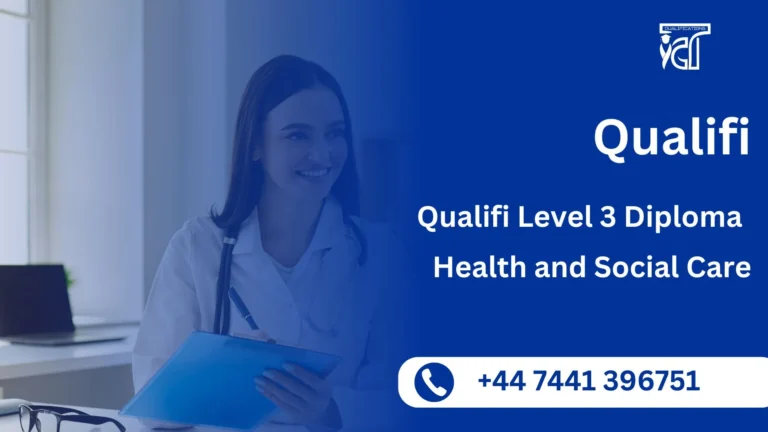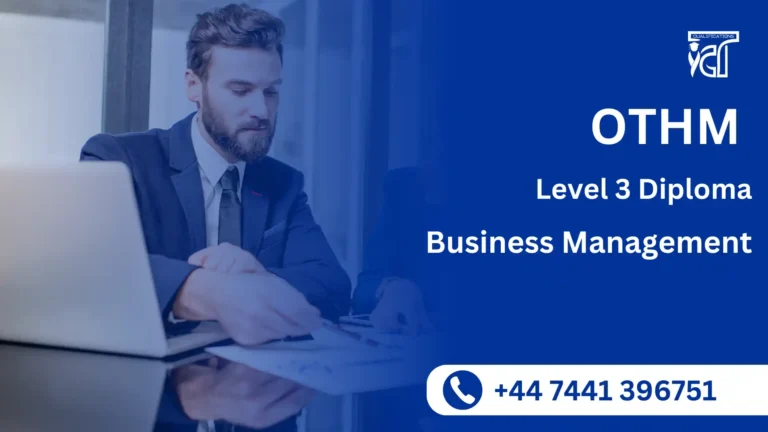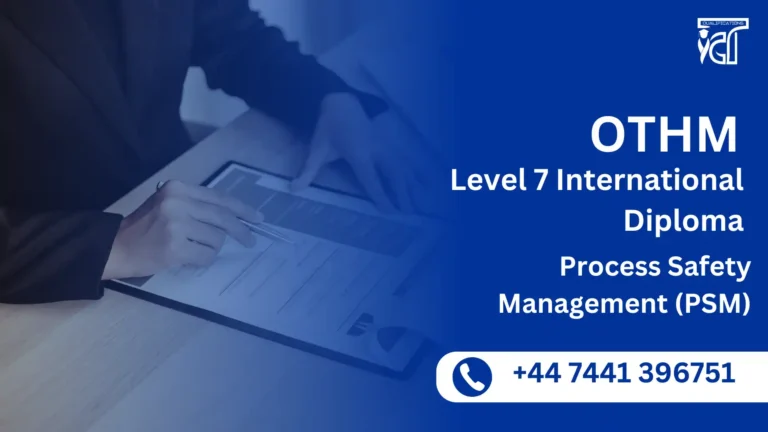In today’s digital era, the demand for skilled IT professionals is higher than ever. The OTHM Level 4 Diploma in Information Technology is a globally recognized, Ofqual-regulated qualification designed to equip learners with essential technical and managerial skills required in the fast-evolving IT industry. This diploma is entirely assignment-based, providing a flexible and practical learning experience.
The OTHM Level 4 Diploma in Information Technology is a flexible, industry-relevant, and globally recognized qualification that provides a solid foundation for a successful career in IT.
Whether you are an aspiring IT professional, a working expert looking to upskill, or a career changer, this diploma is an excellent step toward achieving your career goals.
OTHM Level 4 Diploma in Information Technology
The OTHM Level 4 Diploma in Information Technology comprises six mandatory units, totaling 120 credits. The qualification requires 1,200 hours of Total Qualification Time (TQT) and includes 480 Guided Learning Hours (GLH) to ensure comprehensive learning and skill development.
Level 4 Mandatory units:
| Sr# | Unit Title | Credits | GLH |
|---|---|---|---|
| 1 | Cyber Security | 20 | 80 |
| 2 | Principles of Computer Programming | 20 | 80 |
| 3 | Systems Analysis and Design | 20 | 80 |
| 4 | Web and Mobile Applications | 20 | 80 |
| 5 | Computer and Network Technology | 20 | 80 |
| 6 | Managing Digital Information | 20 | 80 |
GLH (Guided Learning Hours) and TQT (Total Qualification Time) are terms commonly used in vocational qualifications to help define the amount of time a learner is expected to spend on heir studies.
1. GLH (Guided Learning Hours)
GLH refers to the number of hours a learner spends being directly taught, supervised, or supported during their course. This includes the time spent in activities such as:
- Classroom instruction
- Practical workshops
- One-on-one tutoring or mentoring sessions
- Online learning sessions with tutor support
In other words, GLH represents the time that learners are actively engaged with their instructors or learning activities.
2. TQT (Total Qualification Time)
TQT represents the total amount of time a learner is expected to invest in completing a qualification, including:
- GLH (Guided Learning Hours): Time spent on direct learning, as explained above.
- Self-Directed Learning: This includes time spent on independent study, research, assignment completion, preparation for exams, and any other work the learner does outside of direct teaching hours.
TQT is a broader measure that includes all the time required to achieve the qualification. It helps learners and employers understand the overall commitment required for the qualification.
Key Differences Between GLH and TQT:
- GLH focuses on direct learning with guidance or supervision.
- TQT includes GLH as well as independent study time and other learning-related activities.
Example:
If a qualification has a TQT of 600 hours and a GLH of 250 hours, it means the learner should spend 250 hours in direct learning (classroom, online, or tutor-led sessions) and 350 hours on independent study or research.
Learning Outcomes of OTHM Level 4 Diploma in Information Technology
Cyber Security
- Understand the fundamentals of cyber security.
- Understand cyber security protection methods.
- Understand how to manage a cyber security attack.
Principles of Computer Programming
- Understand the principles of computer programming.
- Understand the principles of algorithms.
- Understand the object-oriented Programming language.
- Understand the tools and techniques used for software development.
- Be able to create a software programme to solve a problem using object-oriented programming.
Systems Analysis and Design
- Understand the principles of systems analysis and design.
- Understand system design methodologies and modelling.
- Understand human computer interface (HCI).
- Be able to produce a system design using modelling techniques.
Web and Mobile Applications
- Understand web and mobile application design technology.
- Understand website technologies, tools and software used to develop websites
- Understand multimedia content creation tools and software.
- Be able to create a website or mobile application to fulfil a set of client and user requirements.
Computer and Network Technology
- Understand the fundamentals of cloud computing.
- Understand networking principles and their protocols.
- Be able to support and troubleshoot computing problems.
- Be able to demonstrate routing and switching techniques.
Managing Digital Information
- Understand how to assess the digital information needs of an organisation.
- Understand information processes in an organisation.
- Understand compliance and regulations associated with digital information.
- Be able to improve digital information systems for an organisation.
The Course Benefits of the OTHM Level 4 Diploma in Information Technology are as :
1. Increased Employability
This diploma enhances job prospects by equipping learners with in-demand IT skills, making them attractive candidates for various roles in the tech industry.
2. Pathway to Higher Education
Graduates can progress to the OTHM Level 5 Diploma in Information Technology or other higher-level qualifications, paving the way for further academic and career advancements.
3. Industry-Relevant Skills
The curriculum aligns with current industry demands, ensuring that learners gain practical and technical skills applicable to real-world IT roles.
4. Flexible Learning Approach
As an assignment-based qualification, students can study at their own pace without the pressure of exams, making it ideal for working professionals and career changers.
5. Career Growth Opportunities
Completing this diploma can lead to career progression in roles such as:
- IT Support Specialist
- Software Developer
- Network Administrator
- Cybersecurity Analyst
- IT Project Coordinator
6. Global Recognition
As an Ofqual-regulated qualification, this diploma is internationally recognized, allowing learners to pursue opportunities both locally and globally.
The OTHM Level 4 Diploma in Information Technology is best suited for:
- Aspiring IT professionals who want to build a strong foundation in technology and enter the IT industry.
- Current IT professionals seeking to enhance their knowledge, upgrade skills, or transition into higher roles.
- Career changers looking to switch to the IT sector and gain relevant qualifications.
- Entrepreneurs and business owners who want to understand IT systems and digital infrastructure to manage their businesses effectively.
- Students and recent graduates aiming to pursue further studies or improve their employability in the tech industry.
Entry Requirements
Register Now
Qualification Process
Qualification Process OTHM Level 4 Diploma in Information Technology
- Self-Assessment:
Begin by evaluating your eligibility to ensure you meet the qualification requirements, including work experience, knowledge, and language proficiency. - Registration:
Complete your registration by submitting the required documents, including a scanned copy of a valid ID, and paying the registration fee. - Induction:
An assessor will conduct an induction to confirm your eligibility for the course and explain the evidence requirements. If you do not meet the criteria, your registration will be canceled, and the fee will be refunded. - Assignments & Evidence Submission:
Provide all assignments and the necessary evidence based on the assessment criteria outlined in the course. If you are unsure of the required evidence, consult with the assessor for guidance on the type and nature of evidence needed. - Feedback and Revision:
The assessor will review your submitted evidence and provide feedback. Evidence that meets the criteria will be marked as “Criteria Met,” while any gaps will be identified. You will be asked to revise and resubmit if needed. - Competence Evidence:
Submit final evidence demonstrating that all learning outcomes have been met. This evidence will be marked as “Criteria Met” by the assessor once it is satisfactory. - Internal Quality Assurance (IQA):
The Internal Quality Assurance Verifier (IQA) will review your evidence to ensure consistency, quality, and compliance with standards. - External Verification:
The IQA will submit your portfolio to OTHM External Quality Assurance Versifier (EQA) for final confirmation. The EQA may contact you directly to verify the authenticity of your evidence. - Certification:
Upon successful completion of all checks, OTHM will issue your official certificate, confirming that you have attained the OTHM Level 4 Diploma in Information Technology







